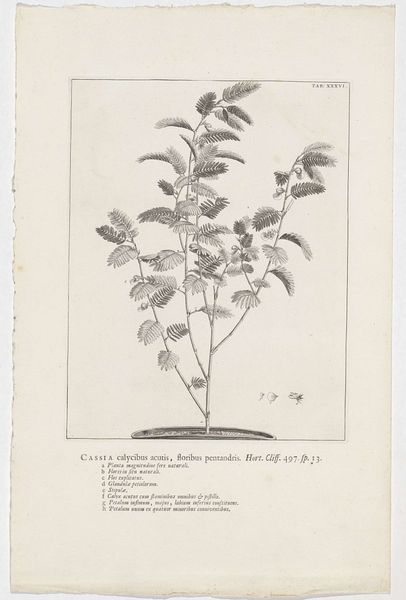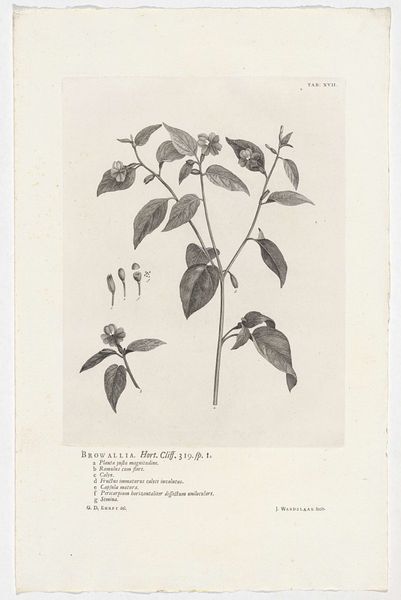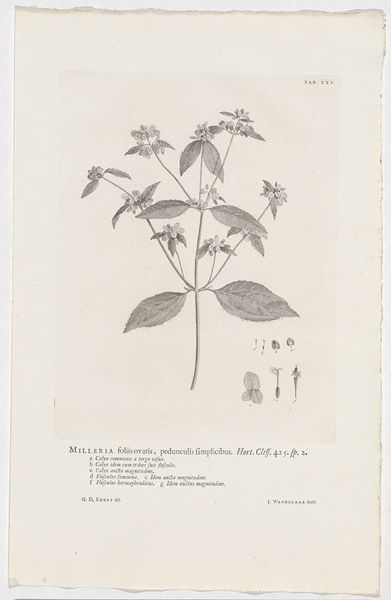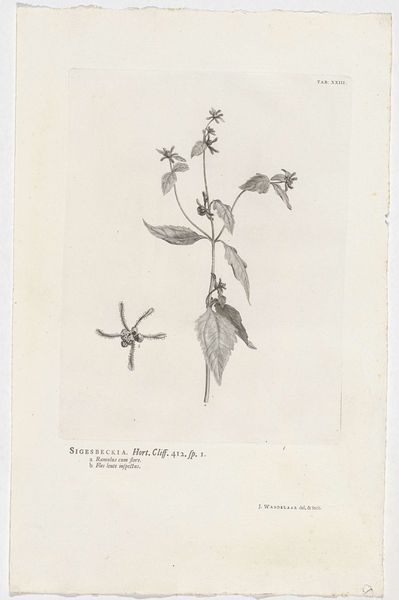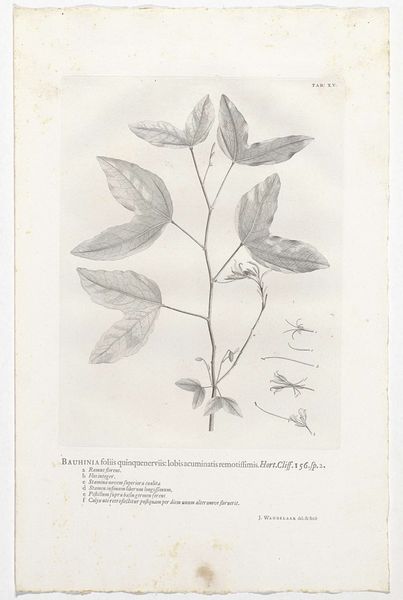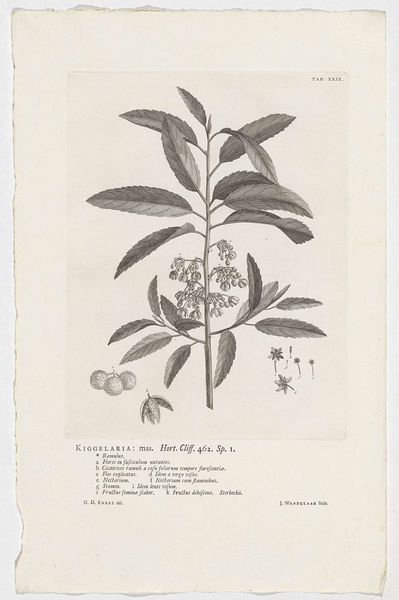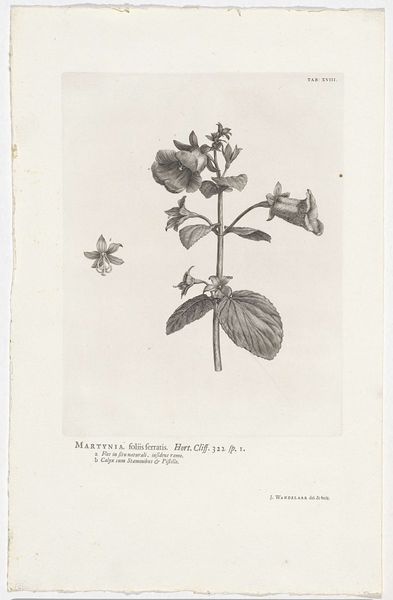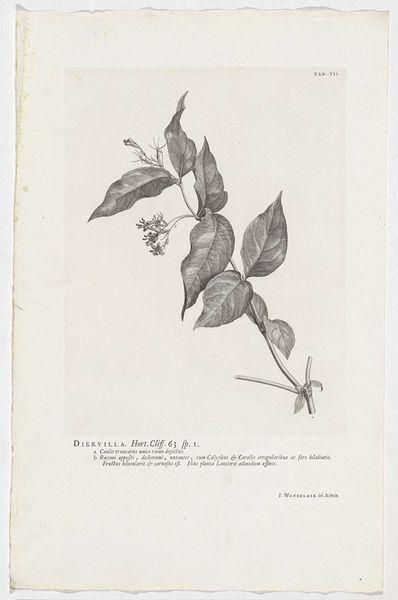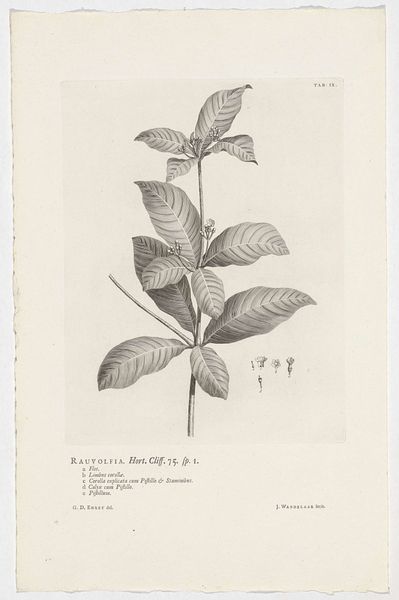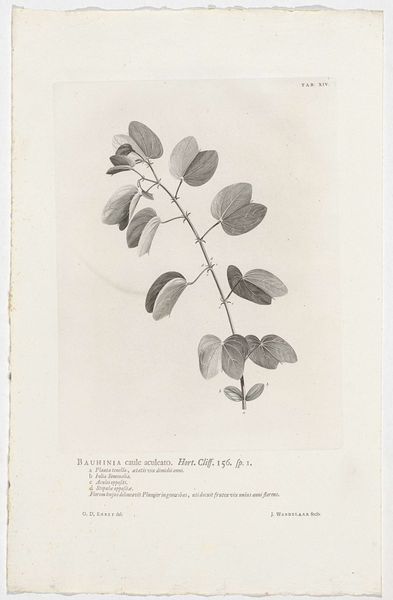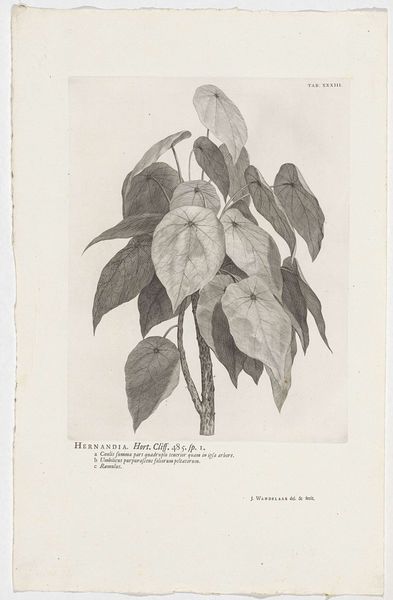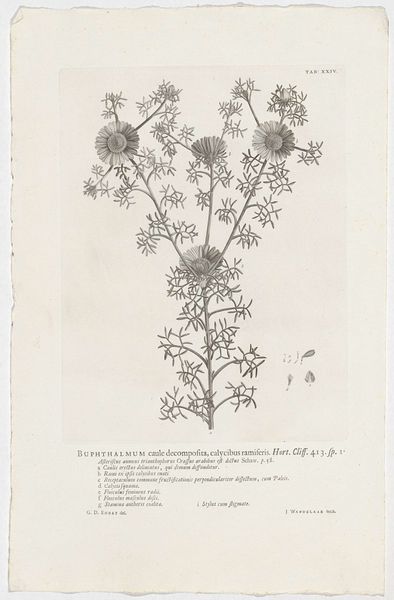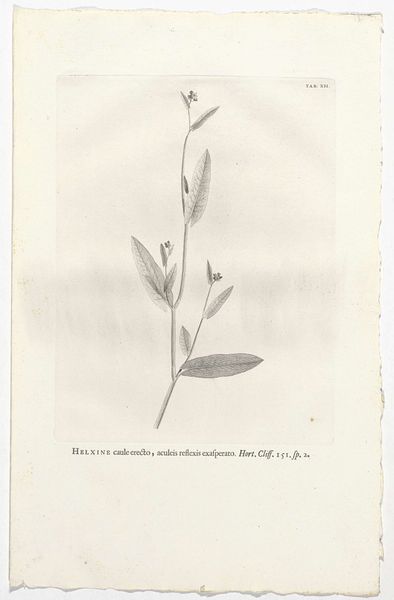
drawing, print, engraving
#
drawing
# print
#
old engraving style
#
flower
#
plant
#
engraving
#
botanical art
Dimensions: height 291 mm, width 224 mm
Copyright: Rijks Museum: Open Domain
Editor: This is "Lobelia cliffortiana," a drawing and engraving made by Jan Wandelaar in 1738. I'm immediately struck by the detail in the rendering of the leaves - you can almost feel their texture. What aspects of this piece stand out to you? Curator: Well, it’s important to recognize this as more than just a pretty picture. It’s a product of Enlightenment-era scientific exploration and a reflection of the evolving relationship between art, labor, and natural history. The engraving process itself – the physical act of etching and printing – is integral to its meaning. Consider Wandelaar, the engraver; his craft, his labor is paramount here. Editor: I see what you mean. The medium itself isn’t just a vehicle, but central to the artwork's function. Is that something botanical illustrations of this period generally demonstrate? Curator: Exactly. Think about the purpose of these prints. They weren't mass-produced for purely aesthetic enjoyment, initially. They were produced to catalog, classify, and circulate knowledge about the natural world – knowledge that was tied to colonial expansion, resource extraction, and global trade. The detail we admired? Essential for identification and commodification. Do you see the connection? Editor: So the meticulous craftsmanship directly enabled scientific understanding and ultimately resource exploitation? The very act of depicting nature was a step towards controlling it? Curator: Precisely! And the dissemination of these images depended on the skilled labor of printers, bookbinders, and distributors – an entire network of material production and consumption. How does knowing this shift your initial perception? Editor: It really contextualizes it. It makes me think about the role of art not as simply representational, but actively participating in broader societal systems of knowledge and power. Curator: Yes. Hopefully this helps broaden one's thinking about how art connects to larger structures!
Comments
No comments
Be the first to comment and join the conversation on the ultimate creative platform.
